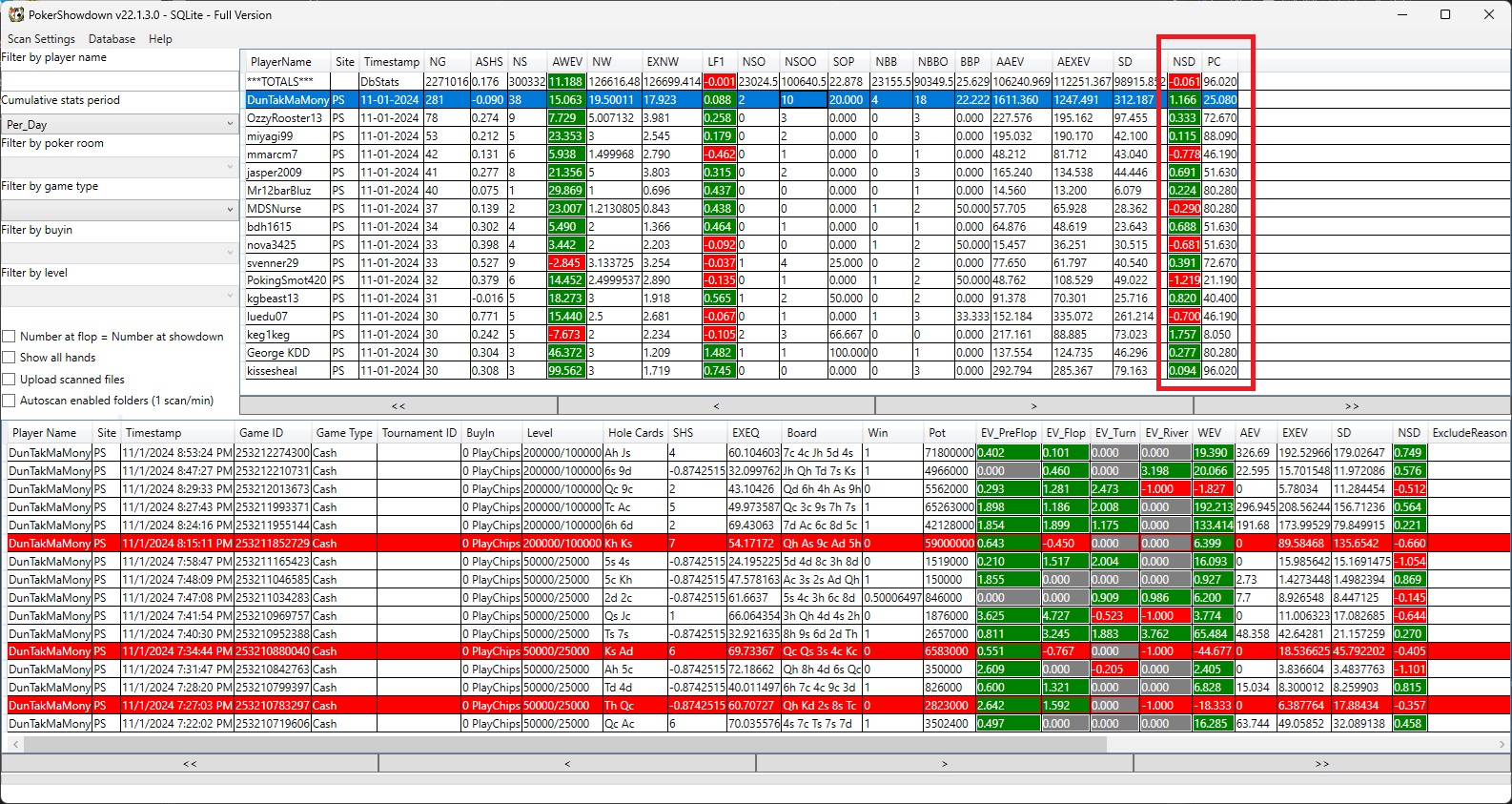About PokerShowdown
Most experienced online poker players can recognize if they are running good or bad. But there is not really a good way to quantify just how good or bad. PokerShowdown quantifies the luck experienced by a player by calcuating the difference between their results and the expected/average result. Specifically, PokerShowdown calculates the number of standard deviations (NSD) from the expected/average result.The 68-95-99.7 rule provides a standard guideline for assigning a probability to your results based on your NSD.
68% of outcomes are within 1 standard deviation from expected.
95% of outcomes are within 2 standard deviations from expected.
99.7% of outcomes are within 3 standard deviations from expected.
I made a YouTube video about basic usage of PokerShowdown which can be found here: basic usage
Here's an analogy that demonstrates the basics of what PokerShowdown does.
You and a friend are betting $100 on each of 10 coin flips. Your friend will give you $100 each time it comes up heads and you pay your friend $100 for each tails.
After 10 coin flips, the results were 4 heads and 6 tails. You were unlucky and lost $200 to your friend. How unlucky were you? The probablity of one side coming up 6 or more times is 37.7%. Not unreasonable and totally within the range of outcomes.
Now let's say hypothetically you make the same bet over 1 million coin flips. The results were the same ratio of 400,000 heads and 600,000 tails. Would you question the results or just sign the $20,000,000 check over to your friend? Well the odds of this outcome are essentially zero. You have better odds of winning the next lottery jackpot or walking on the Mars.
The great thing is the math doesn't just apply to 50/50 coin flips. The math also applies to poker hands that are 60/40, 80/20, or any other probabilities. This is what PokerShowdown calculates and can quantify just how lucky or unlucky your results are.
Number of Standard Deviations (NSD) and Percent Confidence (PC) are highlighted below.
